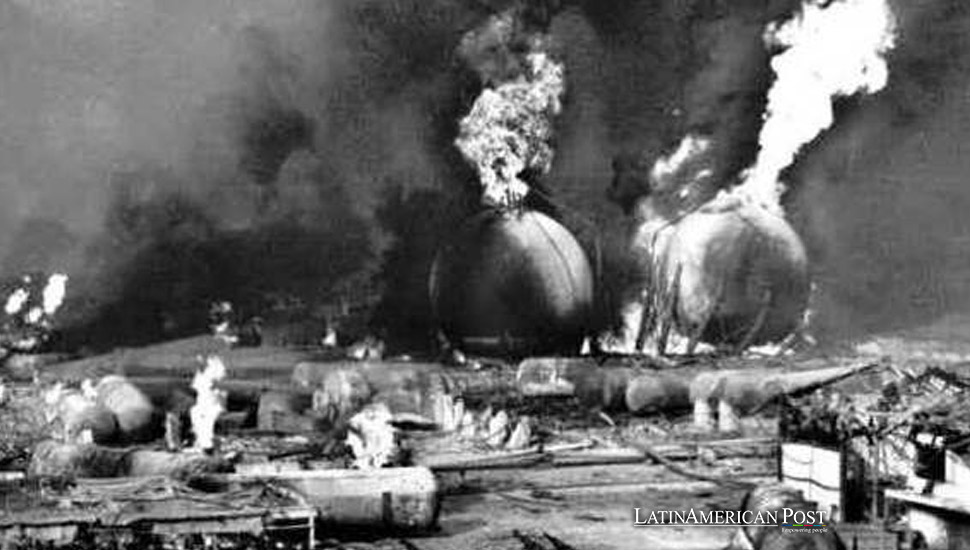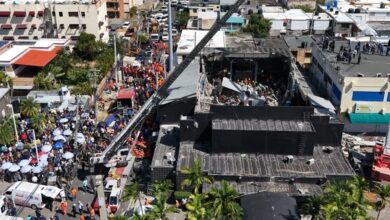Forty Years After San Juan Ixhuatepec: How One Industrial Disaster Still Haunts Latin America

On November 19, 1984, San Juan Ixhuatepec, a modest town on the northern outskirts of Mexico City, was turned into an inferno. Fire rained down from the sky as massive explosions rocked the Pemex liquid petroleum gas (LPG) plant, igniting one of the worst industrial disasters in history. Over 500 people lost their lives, and nearly 1,500 homes were reduced to rubble. The echoes of that fateful morning still reverberate today, not only in Mexico but across Latin America, where industrial safety and the human cost of progress remain ongoing concerns.
The Day San Juanico Exploded
As we mark four decades since the San Juanico disaster, the lessons learned—or ignored—are more relevant than ever. The explosion wasn’t just a tragic accident but a wake-up call that revealed deep flaws in how industries operate in proximity to vulnerable communities. This catastrophe remains a stark reminder of the dangers of unchecked industrial growth, and the consequences still shape policies—or the lack thereof—across Latin America.
The morning of November 19, 1984, began like any other in San Juan Ixhuatepec. Families were still asleep, unaware that a gas leak from one of Pemex’s storage tanks had started to create a deadly vapor cloud. Unbeknownst to the townspeople, this cloud slowly drifted toward the plant’s flare pit—a ticking time bomb waiting to ignite.
At precisely 5:40 a.m., disaster struck. The vapor cloud ignited, setting off a massive fire that an unstoppable series of explosions would soon follow. The first blast, recorded on Mexico’s seismographs, sent shockwaves through the town. Over the next hour, explosions tore through the Pemex plant as its storage tanks, filled with a volatile mixture of propane and butane, ruptured one after another. Two of the explosions were powerful enough to register as earthquakes.
The force of the explosions launched fragments of tanks weighing up to 30 tons over a kilometer away. Shrapnel flew like deadly missiles, cutting through the town and sparking fires that consumed everything in their path. Residents of San Juanico fled in terror, many of them burned by the firestorm or injured by flying debris. Some homes were instantly reduced to ash, while others crumbled under the shockwaves. Those who survived were left scrambling, covered in burns and injuries, trying desperately to escape a hellish nightmare.
The scenes of devastation were unlike anything Mexico had ever witnessed. Bodies were strewn across the streets, many so badly burned they were unrecognizable. Fueled by leaking gas, the fire raged for hours, making rescue efforts nearly impossible. First responders arrived to face a blazing inferno, but it was already too late for many.
How Pemex and Negligence Led to Disaster
San Juan Ixhuatepec wasn’t just unlucky—it was sitting on a ticking time bomb. Pemex, Mexico’s state-owned oil and gas company, had set up its LPG distribution center perilously close to the densely populated town. The plant had six massive storage tanks and 48 smaller horizontal tanks, holding 11,000 cubic meters of highly flammable gases. It was a disaster waiting to happen.
Despite safety regulations that required LPG facilities to be located away from residential areas, Pemex’s plant was placed right next to the homes of 40,000 people. Over the years, the town and Pemex’s facility had grown, but little was done to ensure the safety of those living nearby. Poor oversight, negligence, and corruption allowed the plant to operate without proper safeguards. As a result, the town of San Juanico, comprised of working-class families, found itself living next to a deadly industrial hazard.
On that fateful day in 1984, the consequences of that negligence became tragically apparent. An overfilled storage tank reportedly caused the gas leak that triggered the explosion, and once the leak began, nothing could stop the inevitable disaster. Pemex’s failure to maintain adequate safety measures, combined with the lack of government regulation, created the perfect conditions for a catastrophe.
After the explosions, many questions were raised about why such a disaster was allowed to happen. Investigations revealed that Pemex had ignored multiple warnings about the risks posed by its facility. Even before the explosion, residents had complained about the smell of gas in the air, but their concerns were dismissed. It was clear that both Pemex and the Mexican government had prioritized profits over safety, and the people of San Juanico paid the ultimate price.
San Juanico’s Lasting Legacy
In the immediate aftermath of the explosion, San Juan Ixhuatepec became the focus of national attention. The Mexican government launched a massive relief effort, sending thousands of emergency responders and soldiers to the site. The flames were finally extinguished after 18 hours, but the damage was done by then. Hundreds of people were dead, and thousands more were left homeless, their lives shattered in an instant.
Yet, despite the disaster’s scale, San Juanico’s memory has slowly faded from public consciousness. As the years passed, the focus shifted away from the victims and toward rebuilding. A park was built over the explosion site, and the ruins of the Pemex plant were quietly cleared away. For the survivors, however, the scars of that day remain fresh.
Many of those who lived through the explosion still struggle with the trauma, both physical and emotional. Some suffer from severe burns and other injuries that make it difficult to find work, while others grapple with the psychological impact of having watched their friends and family members die in front of them. For the people of San Juanico, the disaster is far from over—it is a constant presence in their lives, a reminder of how vulnerable they are to forces beyond their control.
Despite the government’s promises to relocate the community and ensure such a disaster never happens again, little has changed. Many industrial facilities that contributed to the disaster are still in operation. The threat of another catastrophe looms large, not just in San Juanico but in communities across Mexico and Latin America.
Still Living in Danger’s Shadow
San Juanico is not an isolated case. Across Latin America, rapid industrialization has brought prosperity to some, but it has also created dangerous conditions for many. The same issues that plagued San Juanico—poor oversight, corruption, and a lack of safety regulations—continue to threaten the lives of those living near industrial plants.
In Venezuela, the 2012 explosion at the Amuay oil refinery killed 55 people and highlighted the ongoing risks of placing industrial facilities near residential areas. In Brazil, the mining disaster in Brumadinho in 2019 killed nearly 300 people when a dam holding toxic waste collapsed, burying nearby homes in a wave of sludge. In Argentina, toxic spills from chemical plants have caused health crises in communities living near industrial zones.
The pattern is clear: Latin America’s industrial boom has come at a cost, and the lessons of San Juanico have not been fully learned. As countries in the region continue to develop, the pressure to balance economic growth with public safety has become more urgent than ever. But too often, profits are prioritized over the well-being of the people who live and work near these industrial facilities.
Ensuring Safety in a Rapidly Developing Region
As we reflect on the 40th anniversary of the San Juanico disaster, it is crucial to ask ourselves: how many more lives must be lost before real change is made? The time has come for Latin America to take a hard look at its industrial practices and make safety a priority. Governments must implement stricter regulations to ensure that industrial plants are held accountable for their impact on nearby communities. Companies must be required to adhere to international safety standards, and communities must be given a voice in decisions that affect their health and safety.
The memory of San Juanico should not be allowed to fade into history. Instead, it should serve as a stark reminder of the dangers of neglecting safety in the pursuit of progress. As Latin America continues to grow and industrialize, it is essential that we learn from the past and take action to protect the lives of those who are most vulnerable.
Also read: Latin American Cities Face Growing Rat Infestations
The industrial future of Latin America does not have to be one of continued tragedy. With the right safeguards in place, we can ensure that the benefits of economic growth are shared by all, without sacrificing the safety and well-being of our communities. But this will require courage, commitment, and a willingness to put people before profits.





